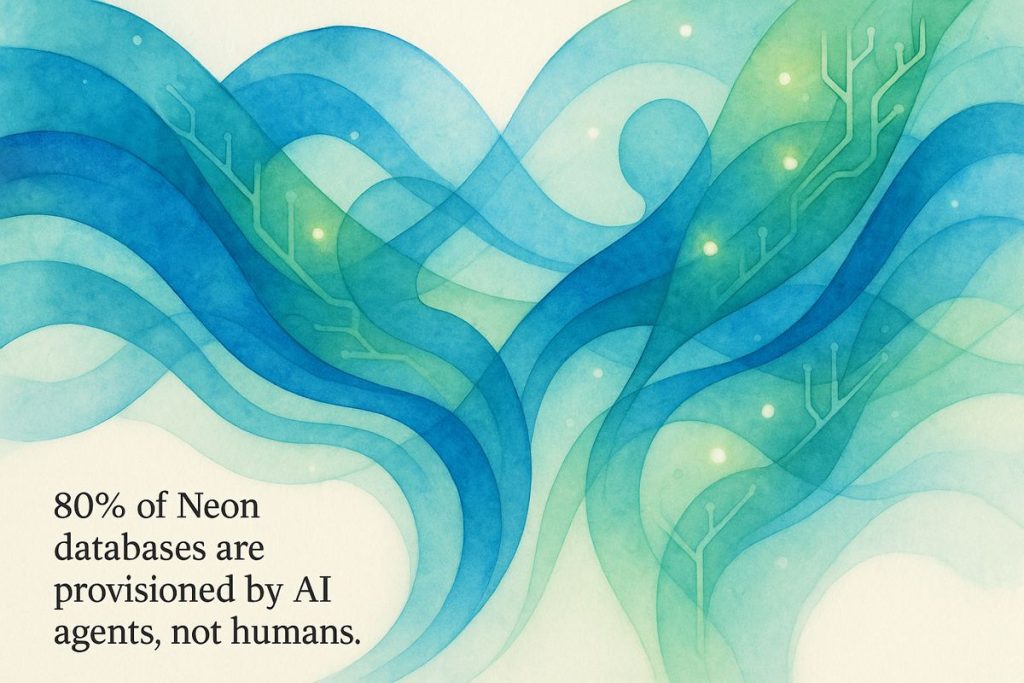Databricks is buying Neon, a fast-growing serverless Postgres database, to make its AI and analytics platform more powerful and flexible. Neon’s technology lets data scale up and down automatically, so companies only pay for what they use, and developers can work faster without worrying about managing servers. Most impressively, AI agents—not just people—can spin up new databases instantly, which is perfect for today’s AI-powered world. With this move, Databricks aims to make building smart, data-driven apps as easy and smooth as a jazz performance, letting businesses adapt quickly to whatever comes next.
Why is Databricks acquiring Neon?
Databricks is acquiring Neon to integrate a serverless, cloud-native Postgres database into its AI and analytics platform. This move enables seamless, elastic data storage and compute—ideal for AI-driven workloads—while offering developers full PostgreSQL compatibility, efficient scaling, and flexible, pay-as-you-go economics.
The news hit my inbox like the aroma of freshly ground coffee beans—Databricks is set to acquire Neon, the plucky cloud-native, serverless Postgres upstart, for a reported $1 billion. That’s not small change, even in the cloud era, and it jostled me out of my Tuesday morning stupor. Why Neon? Why now? Let’s peel back the layers, like examining a palimpsest for echoes of innovation, to see how this move is poised to tilt the tectonic plates beneath our data-driven world.
What’s Actually at Stake? Strategic Motives, Served Hot
For anyone who’s spent time wrestling SQL queries at 2 a.m. or squinting at obscure Postgres logs, Neon’s philosophy isn’t just a technical detail—it’s a minor revelation. Founded in 2021 by Nikita Shamov, Heikki Linnakangas (yes, he of PostgreSQL fame), and Stas Kelvich, Neon champions a developer-first, serverless Postgres architecture that feels as light on its feet as a jazz improvisation. Think Amazon Aurora, but with a twist of open-source bravado and a dash of serverless panache.
Now, Databricks—already a colossus in unified analytics and AI—wants to fold that capability into its ever-expanding constellation. The logic? In the era of AI-native, agent-driven everything, companies crave platforms that don’t just store data but flex, adapt, and serve insights at a moment’s notice. Ali Ghodsi, Databricks’ CEO, put it with the confidence of a man who’s seen more machine learning pipelines than most of us have had hot dinners: “By bringing Neon into Databricks, we’re giving developers a serverless Postgres that can keep up with agentic speed, pay-as-you-go economics, and the openness of the Postgres community.” (source)
That rings true. Just last quarter I watched a pharma startup struggle to keep up with a data pipeline that seemed to morph weekly—Neon’s elasticity would’ve saved them a few headaches (and a few thousand dollars).
Neon’s Technical Allure: Artistry Meets Engineering
Neon’s technical DNA is rich. It’s not just “serverless” as a buzzword; we’re talking about a Postgres clone that can provision isolated instances in a blink—500 milliseconds, give or take. That’s less time than it takes my espresso machine to hiss. Crucially, this isn’t some feature-light imitation. Neon supports full PostgreSQL compatibility, including coveted extensions like PostGIS. That means teams don’t have to rewrite years of stored procedures or give up their beloved JSONB hacks.
But where Neon truly crackles is its ability to scale compute to absolute zero. When your AI agent takes a nap, so does your database bill. And with branching and forking built in, developers can spin up experimental copies of production data, burn it all down, and start again—no harm, no foul. (Admit it, how many times have you wished for a rollback button after deploying at 4:59 PM on a Friday?)
Under the hood, Neon’s architecture reads like a hyperspectral scan of modern database design: stateless compute nodes, a robust pageserver for backend storage, and safekeepers to guard the write-ahead-log like digital sentinels. Storage and compute separation isn’t just a design trend—it’s the backbone for resilience and flexibility that’s sorely lacking in monolithic, legacy systems. Need a technical deep dive? Devzery’s overview is worth a read.
I’ll confess, the first time I tried to wrap my head around compute-storage separation, I fumbled embarrassingly—mixing up WAL replicas and backend shards. But, aha, once I saw a Neon demo clone a prod environment in seconds, it clicked. Relief, then a twinge of envy.
AI Agents, Databricks, and the Dawn of Elastic Workloads
Here’s the kicker (and the reason this acquisition isn’t just a footnote): The telemetry speaks—over 80% of Neon’s databases are spun up by code, not caffeine-fueled developers. If that doesn’t sound like the future, what does?
Matei Zaharia, Databricks’ co-founder (and Spark originator, lest we forget), couldn’t hide his enthusiasms: “Super excited about our agreement to acquire @neondatabase, bringing state-of-the-art, serverless elastic Postgres to Databricks! Building end-to-end data and AI apps is about to get much easier.”
The implications here are as dense as New York cheesecake. AI-powered use cases—from automated research tools in pharma to real-time fraud detection in fintech—aren’t just possible, they become probable. Databricks’ move essentially sets the table for an ecosystem where agentic AI and elastic data infrastructure waltz together, adapting in real-time to unpredictable workloads. Picture a jazz ensemble, each instrument riffing off the others, yet somehow the melody holds.
I had to stop and ask myself: Is this the moment when databases become as invisible as electricity? Maybe. Or maybe we’ll be grumbling about “just one more API” in six months. But the emotional charge—excitement laced with a pinch of trepidation—is unmistakable.
